
March 2021
First of March. First day of Spring! Meteorologically speaking! I can spell it but can I say it?
Daffodils are out! The symbol of new beginnings.
This month we feature allotments and vegetable growing with thanks to those members who contributed. We also include a delicious Delia recipe for carrot cake, so you can never have too many carrots! In addition we have an invitation to peek into one country lady’s diary and another’s garden as well as continuing with theme of parents’ gardens.
Our Club had a mention in the February edition of the RHS magazine, ‘The Garden’, in an article, which referred to problems facing gardening societies and I quote “Malvern Hills Gardening Club revamped its Facebook page, produced a monthly newsletter and held monthly competitions online. ‘We hope we have done enough so that, when we can meet again in person, our membership numbers will start to grow again’, said Patsy Cooke of the club’.”

Helena Kent. Club Secretary
Save the date! Weds, 24 March at 7.20pm
Our second MHGC Zoom meeting!
Details: Join meeting at 7.20pm for 7.30pm talk. Approx one hour long.
The speaker is Ian Thwaites, his talk is titled “The life of a plant and garden photographer”.
Biography: Ian is an International Garden Photographer of the Year award winning botanical photographer with a specialist knowledge of cacti and succulent plants. Many of his images capture the natural beauty of my subjects whether in a formal garden, their natural environment or as a simple portrait. He is a member of the Garden Media Guild, Professional Garden Photographers Association and Chairman of the British Cactus and Succulent Society.
His website is www.ianthwaites.com it is definitely worth taking a look.
We will forward you more details, the link, meeting ID and pass code nearer the time.
Breaking News…..…Breaking News……..Breaking News…..…
April and May Zoom talks have also been organised:
April 28 2021: Adventurous Container Gardening -Stuart Lee
May 26 2021: An Allotment Year – Alan Williamson
Subscriptions 2021.
Subscriptions are now due for renewal for this year. We are maintaining the yearly subscription at £10. The cancellation of the Malvern shows has resulted in a substantial loss of income for the club, as we usually receive monies from holding the plant crêche. In order to remain sustainable as a club, we need to continue with the usual subscription fee this year. Please look in the newsletter for details of how to pay electronically – our preferred method.
If you wish to pay by cheque, please make payable to Malvern Hills Gardening Club and send to the club treasurer. Address is Mary Pillon, 12, Arosa Drive, Malvern, WR14 3JP.
2020 A strange year in my garden by Fay Grist
January A cold, wet and windy month
House sparrows, doves, wood pigeons, robins, dunnock, blue tits, great tits, long tailed tits, blackcaps and
blackbirds on table and feeders.
Snowdrops, wall flowers, snowflakes, winter box, winter sweet, Iris stylosa all in flower.
February Gales, wind and rain. Storm Dennis.
Mahonia, Hellebores, aconites, snowdrops ‘Wendy’s Gold’, Iris stylosa, winter sweet, winter box, winter
honeysuckle and Edgeworthia all in bloom.
March Very mixed; wind, rain and sun
1st Lockdown. Link Nurseries closed. Confined to house.
Goldfinch, blackbird, dunnock, blackcap, house sparrows, doves, robin. Honey and bumblebees on rosemary
and ivy. No frogs this year.
Crocus ‘Tete a Tete’ and ‘Jetfire’ all in flower.
Sow Cosmos, runner bean, Ipomea and mini lobata seed.
April Cold, windy, dry
Goldfinch, blackbirds, doves, house sparrows, dunnock, robin.
White clematis and ‘Freda’, Chilean glory vine, red rhododendron and wisteria all in bloom.
May Very dry and hot.
Long tailed tits, blue tits, great tits, goldfinch, jackdaws, doves, house sparrows, dunnock, blackbirds, robin all
on table and feeders.
Bearded iris, orange, bronze, purple, yellow and black flowering well. Tomato seedlings coming up on
windowsill.
Back to work at Link as soon as allowed.
June Very hot and dry.
Starlings back.
Oriental poppies (all colours). Runner beans suffering, strawberries doing well.
July Rain at last!
Grey squirrel back. Red Admiral, Peacock, Meadow Brown butterflies.
Allium, phlox, clematis, pinks, salvias, cranesbills all good.
Redcurrant, gooseberries and Worcesterberry good. First new potatoes.
August Shasta daisies, Crocosmia, Rudbeckia, Helenium, Cyclamen hederifolium.
Tomatoes ripening.
September Hot, a little rain.
Runner beans, raspberries doing well.
October Warm and wet.
Great tits back.
Clematis flowering 2nd time. Yellow Bearded Iris. Dwarf salvias very good.
Iris stylosa very early, usually Christmas time.
November 2nd Lockdown.
Snowdrops ‘Three Ships’ in bloom, usually mid December. Salvias, Fatsia, Mahonia, Fuchsia, Iceberg rose, pink
Kaffir lilies still in bloom.
Spindle, smoketree, witch hazel, Cornus, ivy, Euonymus great Autumn colour.
Cut down raspberries and shred.
December Snow on 28th.
‘Three Ships’, 20 blooms, Iris stylosa, 18 blooms.
Cut off Hellebore leaves as buds forming. Cleared leaves and put in leaf bin.
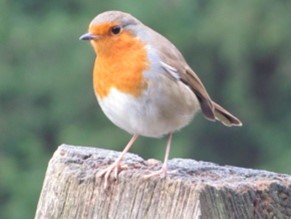

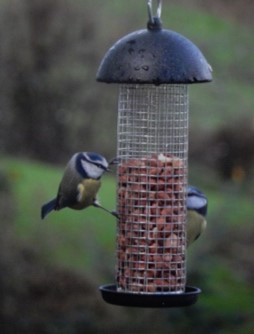


ALLOTMENTS

We have had an allotment in many different parts of the country as we have moved quite a few times
The first one was in Eastney Barracks, Portsmouth, part of an old walled garden, where we grew mainly potatoes as it was quite a distance from our home.
Next was in Lympstone , Devon. A beautiful site overlooking the Exe estuary, the weather there was so warm things grew well but the spring flowers only lasted for a few days as I discovered when we moved up North……
The next one , again by the sea was way up North in Tynemouth ( Newcastle) the thing I remember about that one was collecting seaweed from the shore, with the assistance of 3 young children, and wheelbarrowing it up some steps to the park where the plots were.
I have just read this piece of useless information – Newcastle has the most allotments per person of any city in the UK with 23 per 100,000 people. a total of 66 different sites!!

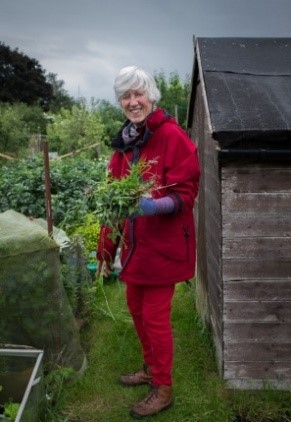

Our next house, in Darlington Co Durham had a garden big enough for us to grow vegetables, especially huge cauliflowers one year, so 15 years without an allotment!
We then moved to London – yes I had an allotment in Merton, near the famous tennis courts. Most of the other growers were old men who spent all day there to get out of the house, they used to have mid day ’coffee’ – a bell was rung to summon the gang – I was invited to join them but only once – think I stalled their conversation! We had free manure delivered to the site, it was said that it came from the Royal Stables.
I now have one in Goodwood Road, Malvern Link. I was offered one in Madresfield Road but they have now gone to be part of the cemetery so just as well I declined it!
That was 10 years ago and I am still getting it into shape, it might not be the tidiest on site but I maintain that I have produce to pick most of the year round, and a freezer full of fruit for crumbles and summer pudding all year! So….. at the moment, in February, I have parsnips, kale (Nero), spinach, parsley and a few left over carrots. There are always some disappontments and this year it is the Purple Sprouting Broccoli which I love and usually does well so not sure what went wrong. But the rhubarb is sprouting well , the broad beans are struggling. Fortunately I have some seedlings nearly ready to plant out . The plot is 125sq m. technically half a plot -rent is £23.40 a year.
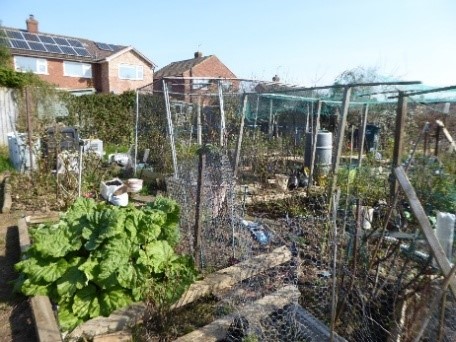
I have been very fortunate with the position of my plot as it backs onto houses and the occupants frequently give me cups of tea, coffee or cold squash – they benefit from some of my produce.
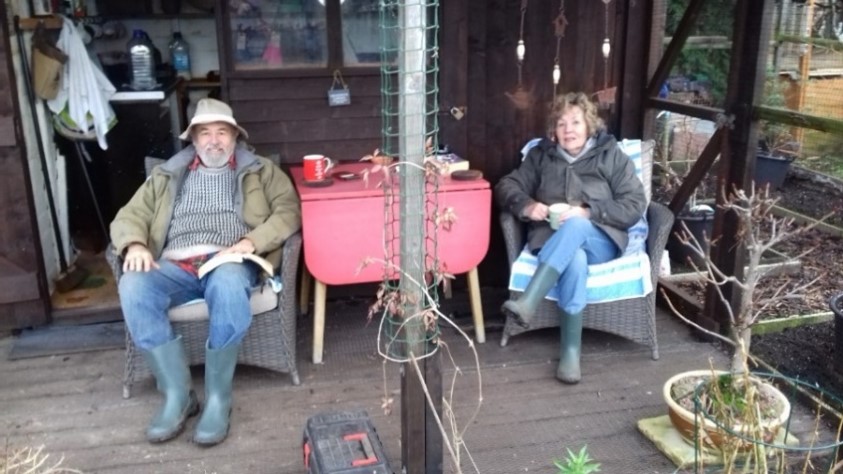
Some are able to relax,& make a cuppa in their sheds

You can have sheds, greenhouses or even poly tunnels

Some plots are neater than others!!!
So upward and onward….. the allotment has been my lifesaver during the past year I did rush down there in March 2020 to plant the potatoes in case we were prevented from going there but it was then decreed that we could attend our plots so it has been a hive of activity all year!! Always socially distanced of course!
Trish Robinson
Allotment News. Barry Kent
With the varied weather, there has been little to do on my allotment. The leeks are doing well and delicious. The weather has become milder but wet. Early March sowing is not looking sensible at the moment. The soil is cold and waterlogged. Weeds are thriving, however!
A Challenge from Richard Winterton
What are these plants in the picture?

Clue: Seed sown at beginning of November and pricked out 2 weeks later. At beginning of January put into 3 ½ inch pots as shown. Have been in house with gentle extra heat. Lack of light during winter has made them spindly. In due course will be planted in vegetable patch!
(Answer at the end of the newsletter!)
Memories of a Kent Garden by Barry Kent
I was born and brought up in mid Kent in the 1950s. My mother kept farm records of how many hop pockets were filled by the hop pickers from London. Here I am, next to a hop pocket!

My father was a police constable and our village home was a purpose built police house (late 1940s). The garden started out as a blank canvas except for a large apple tree in the largest lawn. My Dad was a keen gardener and was lucky to have such a large garden. He grew most types of vegetables and as I grew older I was expected to help with the digging and lawn mowing. Dad was successful in growing asparagus, which seemed exotic to me as a child. Dad even experimented with growing melons against the garage wall. We also benefited from raspberries and strawberries. Most of the garden vegetables were eaten with Sunday roast, listening to ‘Two Way Family Favourites’ on the radio.
Around the house and police office there were flower borders and I can remember spring bulbs flowering, lavender and fuchsias The garden was also a place to learn to ride a bike, keep pets and tree climb! Dad loved to sunbathe in a deckchair with a hankie, knotted in four corners, on his head!
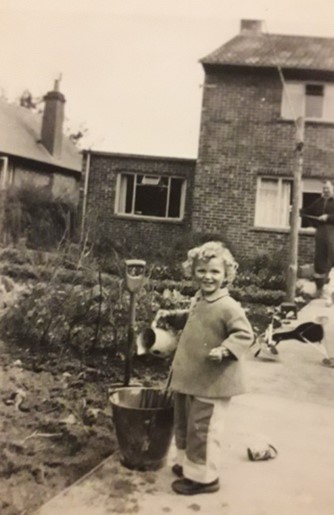
Cordylines and Phormiums by Hilary Thorogood
In this short article I do not intend to go into a detailed explanation of either in terms of botany but rather to point out the merits of both purely from a gardener’s point of view! I have come to love them in recent years and appreciate what they have to offer.
Phormiums New Zealand flax
Phormiums are undemanding exotic looking evergreens with eye catching coloured, sword like leaves.
They are ideal for sunny borders, gravel gardens or containers and I have fallen in love with them over the last few years
They vary in height from 1m to 2.4m, they prefer full sun and are drought tolerant once established. It’s a good idea to check the size so they are going to do well in the position you have chosen.
There are many varieties that are now frost hardy down to -10C but some may need protection in the severest cold.

Phormium Rainbow Queen 1m high -1.5m spread.
A statement plant in this mixed bed, beautiful colours.

Pink Panther 0.8 x 0.8 upright, both frost hardy to -10C
Golden Ray 1.5m-2m x 1.5m-2m spread.
Cordylines
Known as the slender palm lily are many and various. Whereas Phormiums form their leaves from the base of the plant and grow as a clump, Cordyline have a central ‘trunk’ and sword like leaves. They vary in height from 1m to 20m but there are plenty of varieties for small gardens but check before you buy!
I have them planted in the border where they created interest and texture but I like them in containers too.


Cordyline Maori Sunrise planted in perennial beds
Both species are beautiful architectural plants and are a huge bonus in the winter garden as they are evergreen. Their often vibrant colours sing out across the garden. The strap like leaves do get untidy after winter but the worst affected leaves can be pulled off and a liquid feed in spring will set them going again. Container grown phormiums benefit from regular feeding through the spring and summer.
They have flower spikes in summer once mature. Mine are not yet mature enough!
Report on Zoom meeting 24 February.
Our first Zoommeeting proved to be very successful with an enjoyable and interesting talk given by Robin Pearce, a retired nurseryman of hardy plants, on hostas and companion planting.
Robin showed us photos of hostas ranging from miniature ones to large leaved varieties.
He told us that hostas are native to NE Asia with over 70 species and 6100 cultivars. They are also known as plantain lilies and are apparently edible.
They like a rich fertile soil, ph6 and light shade, although some will take full sun. They prefer damp but not waterlogged soil. You can mulch them in bark, gravel or ‘Strulch’, which is composted straw. They can be fed in spring and summer. You can divide them at any time.
They are mainly trouble free but their major pests are vine weevil, rabbits and snails.
Robin offered some ideas for controlling pests, which were: use of natural predators, removing dead leaves, grit, coffee grounds, copper bands, WD40 and possibly garlic or simply keep them in pots. He employed the technique of ‘dawn patrol’, when he would get up at dawn and pick off the snails!
There are now some resistant strains on the market, such as ‘Halcyon’ and ‘Devon Green’.
There are all sizes of hostas from miniature ones, which are best grown in pots, small ones for ground cover, medium ones to large. There are green ones, blue ones, yellow and white, some with variegation and streaky ones. Also ‘pie crust varieties’ with a wavy edge, popular in the US.
Robin suggested a number of plants that make good companions for hostas, such as ferns and plants that perform in winter, when hostas are dormant and die back in summer as hostas come into their own. He suggested snowdrops, Arum, Bergenia, Brunnera, Lily of the valley, Cyclamen, Epimedium, Erythronium, Heuchera, Hellebores and Liriope muscari.
The meeting lasted about an hour.
Plant news from Lucy Bannister
It struck me the other day that for the last few years I have become a plant collector, not to be confused with a plant hunter. Not for me travelling to the four corners of the earth, wading through rivers, climbing mountains and dealing with unspeakable insects, but rather driving around Worcestershire, picking up donated plants from generous nursery men and women, all in aid of St. Richard’s hospice.
I like to think that Spring is on its way, and as this is the time when we assess our gardens for the coming year, we may decide to dig up or split plants. If this is the case, I would be very grateful for any surplus plants you may have, that I could sell in aid of the hospice. All I ask is that they are in pots and labelled. It seems now that the “garden centre” on my drive will be open until April 12th and after that plants will be for sale at the hospice shops in Malvern Link and Pershore. I would be more than happy to collect any plants you may have, combining it with an essential journey to the supermarket! Many thanks. Lucy. swissbannister@gmail.com
Answer to challenge
Potatoes grown from seed. Not seed potatoes! Did anyone get it right? Look forward to seeing photos of the crop!
Questionnaire
We would like to get some feedback from members, so would be very grateful if you would answer this short questionnaire and email your replies to malvernhillsgardeningclub@gmail.com.
- Which newsletter articles have been of most interest to you?
- What are your main interests in the garden – flowers/fruit/veg or other?
- Have you a particular passion in the garden? What is it?
- Have you any gardening tips you would like to share? What are they?
- Can you recommend any local gardens or nurseries to visit?
- What would you like to see featured in future newsletters?
Next month we will feature members’ gardening passions or special interests, so please send in your contributions by 24 March!